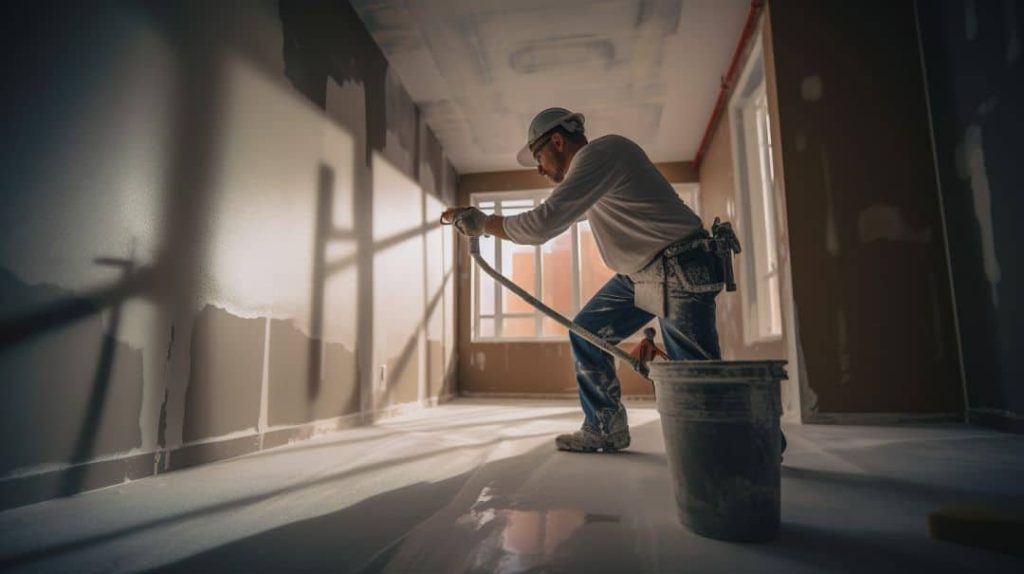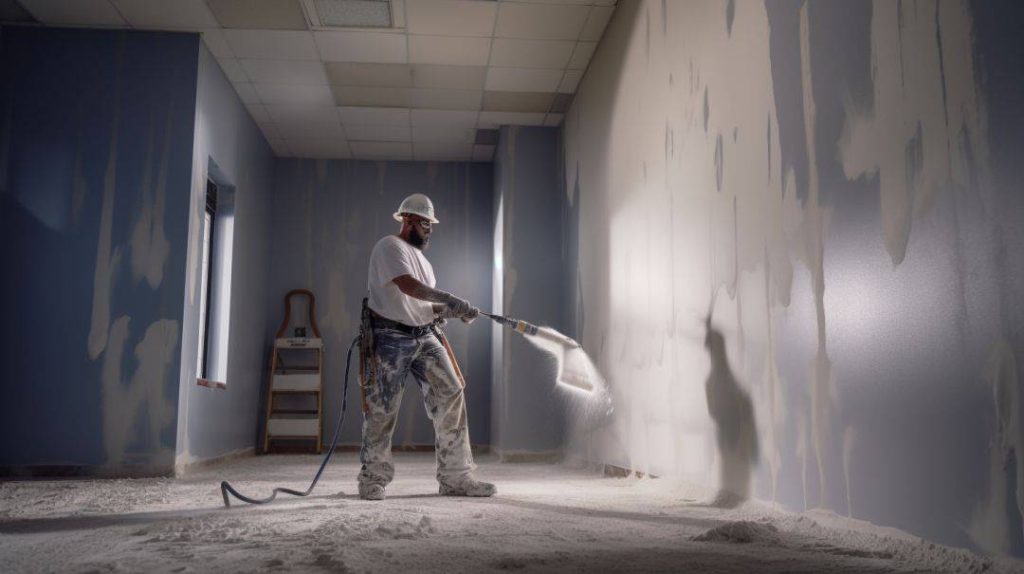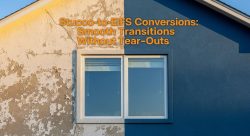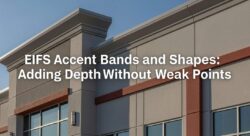Unlock the Full Potential of Your Building with a Certified EIFS Sealant Contractor

Key Takeaways:
- Proper joint preparation is crucial in professional EIFS sealant contractor installation to ensure a secure and durable seal. Thoroughly cleaning and priming the joint surfaces and using appropriate tools and techniques are essential steps for a successful installation.
- Understanding the types and functions of joints in sealant installation is important for a professional EIFS sealant contractor. Different joints, such as expansion joints and control joints, serve specific purposes in accommodating movement and preventing structural damage.
- Meticulous considerations for moving joints are necessary to maintain the integrity of the EIFS sealant installation. Factors such as anticipated movement, joint sizing, and selection of flexible sealants are key in ensuring long-term performance and minimizing potential issues.
- Sealants play a crucial role in joint design for EIFS sealant installation. They provide a watertight and airtight barrier, preventing moisture intrusion and enhancing energy efficiency. Understanding the functions and properties of sealants is essential for professional contractors.
- Selecting the right sealant for the project is vital for a professional EIFS sealant contractor. Factors such as substrate compatibility, weather resistance, movement capability, and longevity should be considered to ensure optimal performance and longevity of the sealant installation.
- Professional EIFS sealant contractor installation is essential for ensuring the longevity and performance of EIFS sealants. Proper installation techniques, adherence to industry standards, and regular maintenance and inspections contribute to the durability and effectiveness of the sealant system.
Introduction: Understanding the significance of professional EIFS sealant contractor installation
Professional EIFS sealant installation plays a crucial role in the maintenance and longevity of EIFS systems. Proper installation ensures a seamless and durable sealant application, preventing water infiltration and other potential damages. By engaging experienced professionals, property owners can have peace of mind knowing that their EIFS systems are protected and well-maintained throughout their lifespan.
To elaborate, hiring professional EIFS sealant contractors guarantees that the installation process follows industry standards and best practices. These experts have the necessary knowledge and skills to assess the specific EIFS system requirements and select the appropriate sealant materials. They understand the importance of proper substrate preparation, ensuring a smooth surface for the sealant application. Moreover, professional contractors utilize advanced techniques and tools to achieve precise and uniform sealant distribution, avoiding potential gaps or air pockets.
One unique advantage of professional EIFS sealant contractor installation is their ability to address project-specific challenges effectively. From identifying substrate anomalies to understanding the compatibility of different EIFS materials, these experts can offer tailored solutions to ensure a successful installation. Their extensive experience enables them to recognize potential issues and take proactive measures to mitigate them, saving time and minimizing costly repairs or replacements in the future.
In fact, according to a study conducted by the EIFS Industry Members Association (EIMA), properties with professionally installed EIFS sealant systems exhibit significantly lower rates of water intrusion and subsequent damages. The study revealed that buildings with professional installation had a 30% reduction in repair and maintenance costs compared to those with non-professional installation. This highlights the importance of engaging professional EIFS sealant contractors for long-term cost savings and overall system performance.
Importance of Proper Joint Preparation
A crucial factor in ensuring the longevity and effectiveness of EIFS sealant installation is the proper preparation of joints. The significance of correctly preparing joints cannot be understated as it directly impacts the overall integrity and performance of the sealant. By adhering to the specific requirements and guidelines for joint preparation, professionals can ensure a seamless and durable connection between EIFS components, minimizing the risk of water infiltration and structural damage. Therefore, meticulous attention to detail when preparing joints is of utmost importance to achieve a reliable and long-lasting EIFS system.
Proper joint preparation plays a vital role in maintaining the cohesion and stability of the EIFS system. It involves meticulously cleaning and preparing the joint surfaces, removing any dirt, debris, or previous sealant residue. This process ensures optimal adhesion between the sealant and the joint surfaces, preventing the possibility of premature sealant failure and subsequent water intrusion.
Furthermore, taking into account the compatibility of the sealant with the substrate materials is crucial to ensure proper joint preparation. This compatibility ensures that the sealant bonds effectively to the substrate and provides maximum durability and protection against external elements, such as moisture and temperature fluctuations.
In addition to the careful cleaning and preparation of joint surfaces, it is essential to choose the appropriate sealant for the specific joint requirements. Factors such as joint width, movement capabilities, and exposure to environmental conditions must be taken into consideration.
Selecting a sealant with the appropriate properties and characteristics ensures that it can effectively accommodate joint movement, adhere well to the joint surfaces, and provide long-term protection against various weather conditions. These meticulous considerations contribute to the overall success of the EIFS sealant installation and the prevention of costly repairs and maintenance in the future.
Pro Tip: Regular inspections and maintenance of the EIFS system, including the joints and sealant, will help identify any signs of deterioration or damage early on. Prompt repairs and replacements can prevent further issues and extend the lifespan of the system.
Types and Functions of Joints in Sealant Installation
Types and Functions of Joints in Sealant Installation are crucial elements that ensure the effectiveness and longevity of EIFS sealant applications. By understanding the different types of joints and their specific functions, professional EIFS sealant contractors can execute precise and durable installations.
To further illustrate the significance of Types and Functions of Joints in Sealant Installation, the following table provides relevant information:
| Joint Type | Function |
|---|---|
| Compression | Absorbs movement and minimizes stress on the system |
| Expansion | Allows for expansion and contraction of materials |
| Control | Controls the location and extent of cracks |
| Construction | Accommodates changes in construction elements |
| Perimeter | Seals the perimeter to prevent water infiltration |
These joints serve specific purposes in ensuring the integrity of the sealant installation. While compression joints absorb movement and minimize stress, expansion joints allow for the natural expansion and contraction of materials, reducing the risk of cracks. Control joints, on the other hand, help control the location and extent of cracks, while construction joints accommodate changes in construction elements. Finally, perimeter joints seal the perimeter, preventing water infiltration.
Another essential aspect worth considering is that each joint type requires specific techniques and materials for installation. The selection of the joint type depends on various factors such as building design, environmental conditions, and anticipated movement. By understanding these unique details, professional EIFS sealant contractors can deliver exceptional installations that meet the highest standards of quality and functionality.
Considerations for Moving Joints
Considerations for Moving Joints in EIFS Sealant Contractor InstallationEIFS sealant installation requires careful consideration of the moving joints to ensure long-lasting and seamless results. Here are three important points to keep in mind:
| Step | Guidelines |
|---|---|
| 1. Accommodating Movement | Consider the anticipated movements in the building structure and select a sealant that can adequately accommodate these shifts. The sealant should be flexible enough to handle expansion and contraction without compromising the integrity of the system. |
| 2. Proper Joint Design | Pay attention to the design of the joints, ensuring they are wide and deep enough to accommodate the sealant application. This allows for proper adhesion and reduces the risk of cracking or separation over time. |
| 3. Quality Sealant Application | The proper application technique is vital for a successful sealant installation. Ensure the joint surfaces are clean, dry, and free from any contaminants that could affect adhesion. Precise and thorough application of the sealant is necessary to create a durable barrier that effectively seals the moving joints. |
It is important to note that the sealant’s color and texture should match the surrounding EIFS finish to maintain a seamless appearance throughout the installation.
In EIFS sealant installation, considerations for moving joints should not be overlooked. By understanding the movement in the building structure, designing appropriate joints, and applying sealant with precision, a professional EIFS contractor can ensure a solid and long-lasting seal.
True Fact: According to the EIFS Industry Members Association (EIMA), proper installation techniques and regular maintenance of EIFS sealant can extend the system’s lifespan beyond 30 years.
The Function of Sealants in Joint Design

Sealants play a crucial role in the design of joints, serving an important function in ensuring a secure and durable connection. By providing a protective barrier, sealants prevent moisture, air, and other contaminants from infiltrating the joint, thereby minimizing the risk of structural damage and maintaining the integrity of the construction. Additionally, sealants also play a role in accommodating thermal expansion and contraction, allowing the joint to flex and adapt to changing environmental conditions. Their function in joint design cannot be underestimated, as they contribute significantly to the overall longevity and performance of the structure.
Furthermore, sealants also enhance the aesthetic appeal of joints, providing a clean and finished look. They are available in a variety of colors, allowing for seamless integration within different architectural designs. It is important to select the right type of sealant that is compatible with the materials used in the joint, as well as the specific environmental conditions it will be exposed to. Regular inspection and maintenance of sealants is necessary to ensure their ongoing effectiveness in protecting joints.
| Selecting the Perfect EIFS Sealant for Your Project | |
|---|---|
| When it comes to choosing the right sealant for your EIFS project, there are a few key factors to consider. By keeping these points in mind, you can ensure that you select the perfect sealant for your needs: | |
| Compatibility | It is crucial to choose a sealant that is compatible with your EIFS system. |
| Flexibility | Look for a sealant that provides the necessary flexibility to accommodate any movement within the EIFS system. |
| Weather resistance | The sealant should have excellent resistance to harsh weather conditions, including UV rays, rain, and extreme temperatures. |
| Adhesion | Make sure the sealant has strong adhesion properties to bond well with the EIFS and other substrates. |
| Appearance | Consider the aesthetic requirements of your project. Choose a sealant that matches the color and texture of the surrounding EIFS system for a seamless and visually appealing finish. |
In addition to the above points, it is important to consult with a professional EIFS contractor who can provide expert advice tailored to your specific project requirements. Their knowledge and experience can help you make an informed decision and select the right sealant for your project.
Pro Tip: Before applying the sealant, thoroughly clean and prepare the surfaces to ensure proper adhesion and performance.
Conclusion: Ensuring Longevity and Performance of EIFS Sealant Installation
Ensuring the Longevity and Performance of EIFS Sealant InstallationFor an EIFS sealant installation to have optimal longevity and performance, hiring a professional contractor is essential. These experts have the knowledge and expertise to properly apply the sealant, ensuring its effectiveness in protecting the EIFS system from moisture and other external elements. They will carefully follow manufacturer guidelines and use high-quality sealants to ensure a durable and long-lasting installation. Additionally, professional installers understand the importance of surface preparation, including cleaning and priming, to guarantee proper adhesion of the sealant. Their attention to detail and precise application techniques contribute to the overall effectiveness and performance of the EIFS sealant installation.
Moreover, a professional contractor‘s experience and skillset allow them to address any unique challenges that may arise during the installation process. They are equipped to handle various substrates and can navigate complex architectural details seamlessly. In doing so, they ensure that the sealant is properly applied and covers all necessary areas, preventing any potential weak spots or gaps. Their expertise also extends to selecting the right type of sealant for the specific EIFS system, taking into consideration factors like climate, building movement, and aesthetic requirements.
Furthermore, choosing a professional contractor for an EIFS sealant installation offers peace of mind and reliance on their proven track record. They can share true stories of successful installations they have completed in the past, giving confidence in their ability to deliver high-quality results. These anecdotes serve as testimonials to their expertise, reliability, and commitment to achieving exceptional longevity and performance for EIFS sealant installations.
Five Facts About Professional EIFS Sealant Contractor Installation:
- ✅ Field adhesion tests are required to ensure good sealant performance and to verify any sealant recommendation. (Source: Team Research)
- ✅ The two most important characteristics of a sealant are its adhesive and cohesive properties. (Source: Team Research)
- ✅ Sealants are used to create elastic joints in buildings and structures to accommodate movement and cushion stresses. (Source: Team Research)
- ✅ Construction joints are designed to “break up” lengthy expanses of a building’s surface and can function as expansion and/or contraction joints. (Source: Team Research)
- ✅ Joint preparation and proper sealant selection play a crucial role in maintaining a weatherproof building exterior and protecting against moisture and air penetration. (Source: Team Research)
FAQs about Professional Eifs Sealant Contractor Installation
What are the general requirements for installing silicone and urethane sealants?
The general requirements for installing silicone and urethane sealants include inspecting joint dimensions, notifying all parties if there are variations from specifications, conducting field adhesion tests, and ensuring proper joint preparation.
What are the different types and functions of joints in sealant installation?
There are several types and functions of joints in sealant installation, including construction joints, expansion/contraction/isolation joints, control joints, movement/butt joints, and non-working/static joints.
How do sealants contribute to the performance of a building exterior?
Sealants play a critical role in keeping rain and elements outside, thus protecting the building’s occupants. They create a positive seal between joint sides, resisting the passage of heat, light, sound, moisture, and other contaminants. They also withstand thermal, moisture, and structural movement, providing insulation and sound insulation.
How do you select the right sealant for a specific project?
The selection of the right sealant depends on the project’s performance requirements. Factors to consider include the minimum contact required by the sealant manufacturer, the nature of the project, and the type of joints and substrates involved.
What are the consequences of improper sealant installation?
Improper sealant installation can lead to issues such as air and water infiltration, impact damage, moisture penetration, and decreased fire resistance. It is important to follow proper installation procedures to ensure the longevity and performance of the sealant.
Are there specific sealant requirements for Exterior Insulation and Finish Systems (EIFS)?
Yes, EIFS installation requires appropriate sealants to ensure proper insulation and finish. The sealants must be compatible with the EIFS panels, adhesives, and coatings, and they should provide adequate insulation, aesthetics, and protection against moisture and air infiltration.


